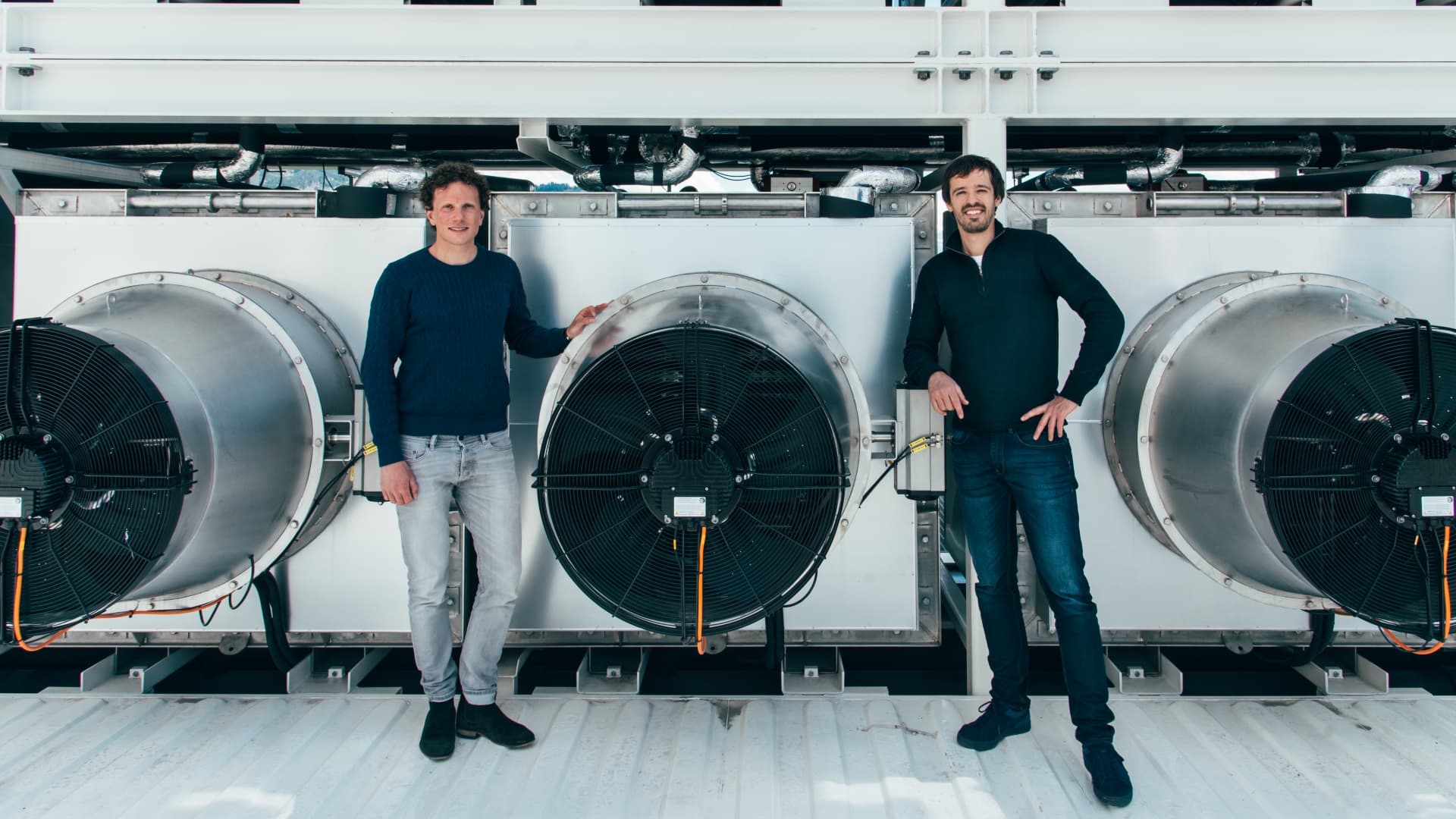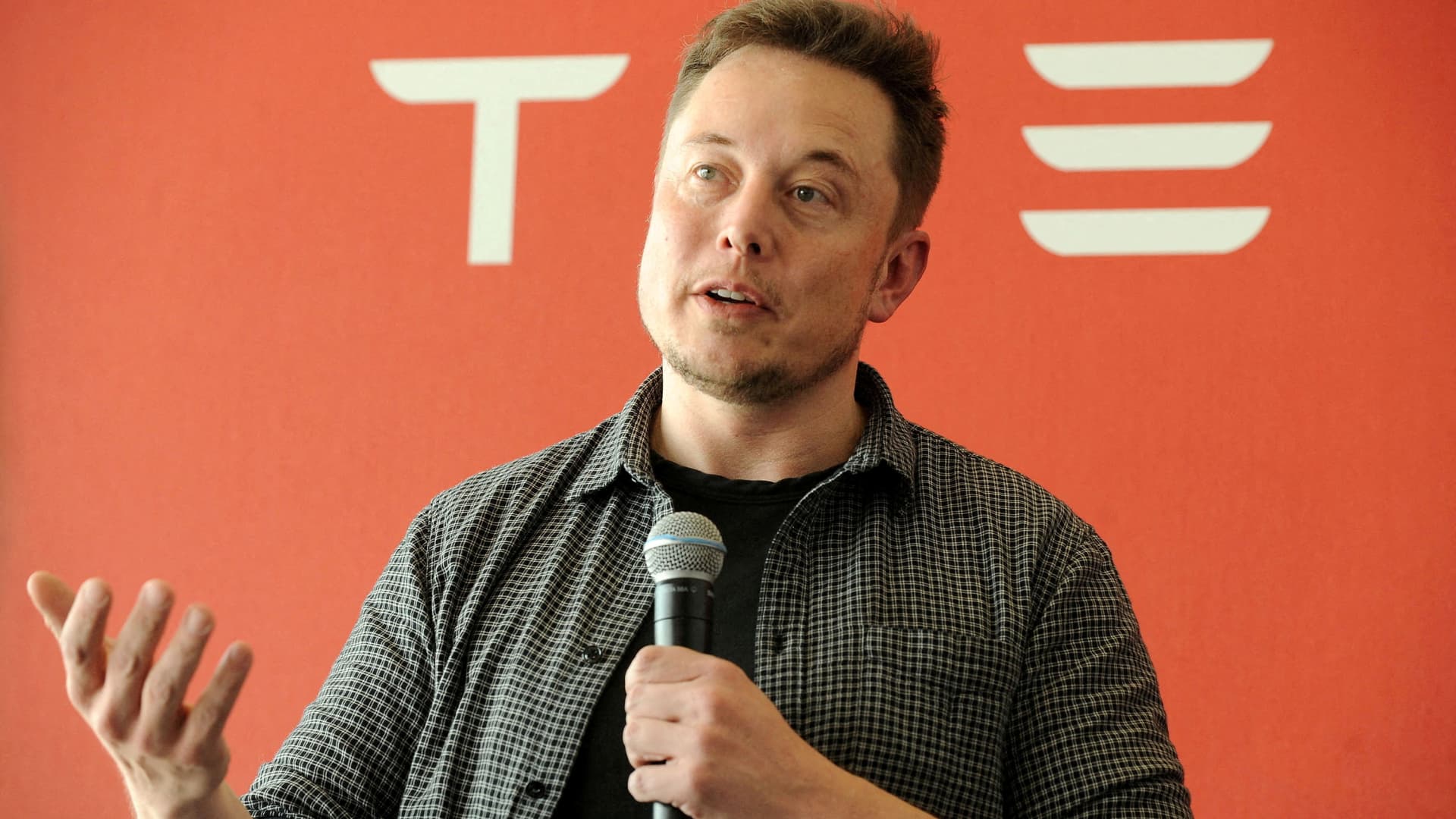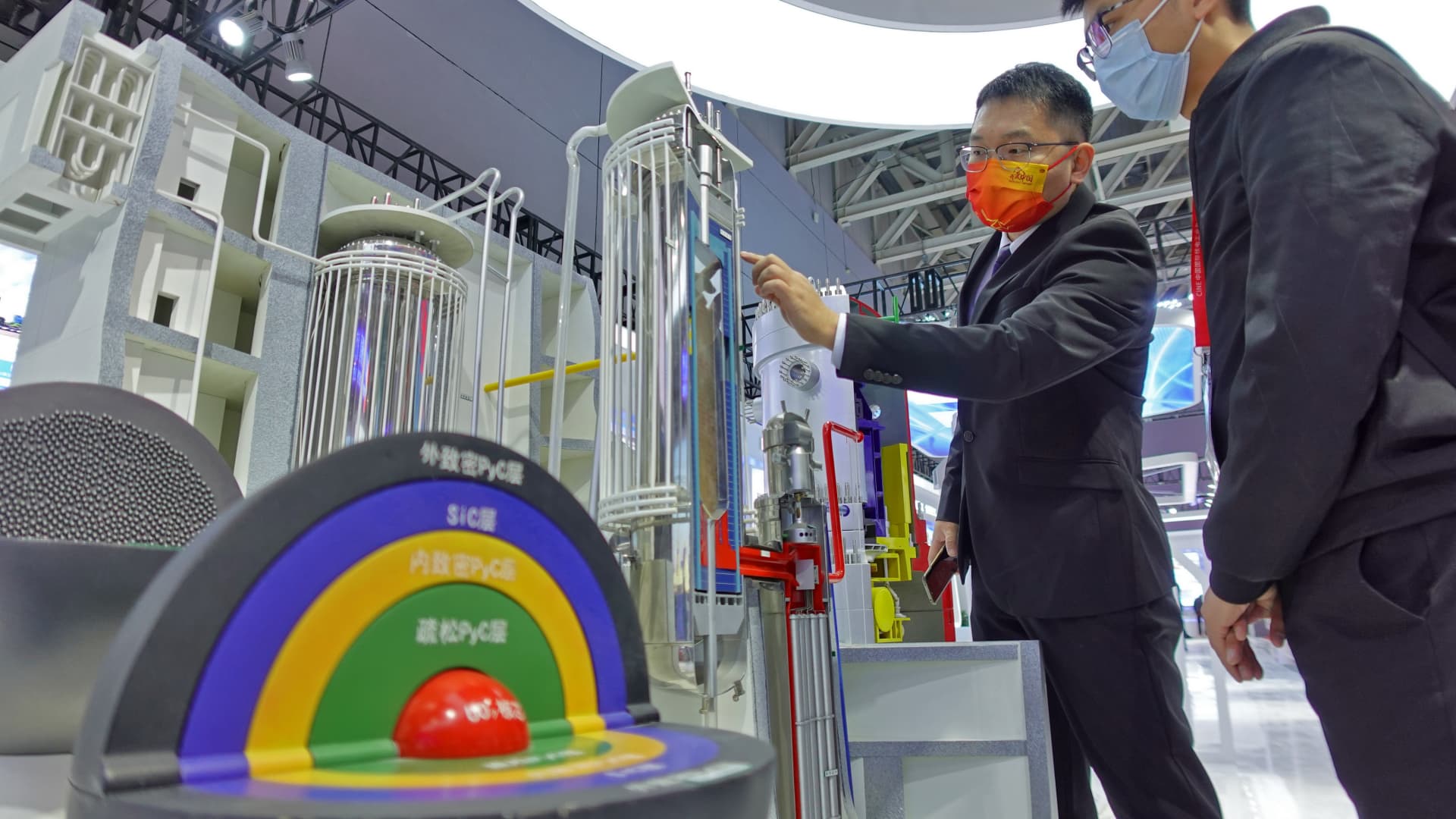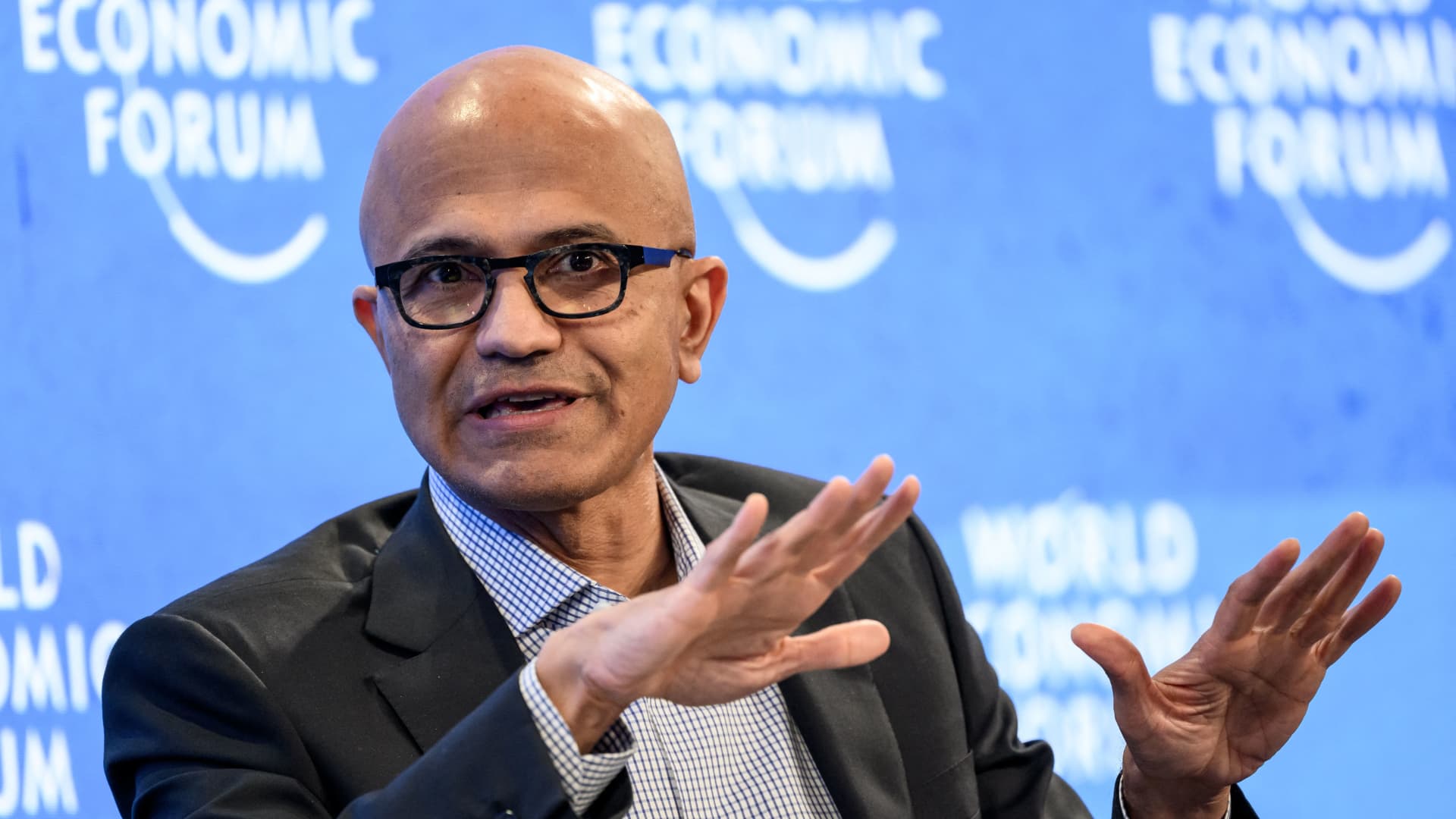From milligrams to gigatons: Startup that sucks carbon dioxide from the atmosphere is building a big new plant in Iceland


Carbon dioxide removal startup Climeworks announced on Tuesday it is building a second commercial sized plant in Iceland. When fully operational in 18 to 24 months time, the plant will capture and store 36,000 metric tons per year of carbon dioxide.
That’s a very small percentage of the total amount of carbon dioxide emitted around the globe each year: In 2021, total global carbon dioxide emissions were a record-high 36.3 billion metric tons, according to the International Energy Agency, a Paris-based intergovernmental energy organization.
But this new factory, alongside a smaller one in Iceland that has the capacity to remove 4,000 tons a year, are steps toward the company’s bigger goals of removing multiple millions of tons of carbon dioxide a year by 2030, and one billion tons per year by 2050.
Those goals are many orders of magnitude higher than where Climeworks is right now, but as co-founder and co-CEO Jan Wurzbacher told CNBC in May, the team has been at this since 2009 and has already seen the technology improve in huge steps.
“We started with milligrams of carbon dioxide captured from the air. Then we went from milligrams to grams, from grams to kilograms to tons to 1,000 tons. So we did quite a couple of these steps already.”
Facing a sea of skepticism
Wurzbacher and Christoph Gebald launched Climeworks in 2009 as a spin off of ETH Zürich, the main technical university in Switzerland’s largest city.
The idea of vacuuming carbon dioxide out of the air has been getting more mainstream attention and hundreds of millions of funding recently. In April, Stripe, Alphabet (Google’s parent company), Meta (formerly Facebook), Shopify and McKinsey announced they were teaming up to commit to purchase almost $1 billion worth of carbon dioxide removal from companies that are developing the technology. A couple days later, Chris Sacca’s climate investment company, Lowercarbon Capital, announced a $350 million fund to invest in carbon removal startup companies.
This kind of momentum in the industry was certainly not present when Climeworks started.
“Back in 2009, the environment was definitely very different,” Wurzbacher told CNBC. “There was an ongoing climate debate, but it was more about it was more a debate about how can we avoid emissions. And when we came up with the method of capturing carbon dioxide from the atmosphere, many people said, ‘Hey, wait a minute, let’s not waste our time with that.'”
But now, in addition to the private sector investment, the United Nations’ leading climate science organization, the Intergovernmental Panel on Climate Change (IPCC), included carbon capture in its most recent update for addressing global warming, published in April.
“Carbon Dioxide Removal (CDR) is necessary to achieve net zero carbon dioxide and greenhouse gas emissions both globally and nationally, counterbalancing ‘hard-to-abate’ residual emissions,” the technical summary of the IPCC recommendations says. “CDR is also an essential element of scenarios that limit warming to 1.5°C or likely below 2°C by 2100, regardless of whether global emissions reach near zero, net zero or net negative levels.”
There are other ways to remove carbon dioxide from the atmosphere besides vacuuming it from the air.
Planting trees is a natural method, but takes a lot more land than the factories Climeworks is building to remove an equivalent amount of CO2. Also, a tree can die, be cut down or burned after it is planted, making it hard to account for how much CO2 it will actually remove over its lifetime. Carbon dioxide removed from the atmosphere mechanically, as Climeworks does, can be permanently stored underground.
When Wurzbacher and Gebald were sure that technical carbon dioxide removal would be necessary to respond to climate change, many others were not.
“Of course, there were a lot of skeptics at that point in time,” Wurzbacher told CNBC. “We didn’t know what would happen or exactly how things would turn out, how long it would take to develop the technology, to scale the technology — but for us, it was somehow clear that this is something that will be needed.”
Wurzbacher, 38 now, was just 25 years old then. “We just went on, and didn’t listen too much” to the doubters.
From zero to ‘overwhelming’ demand
After developing the carbon removal technology in the lab for close to a decade, Climeworks built its first plant in Hinwil, Switzerland, in 2017.
At that time, Climeworks sold the carbon dioxide it captured from the atmospheric air to customers like a local greenhouse for using in fertilizing vegetable growth and to beverage maker Coca-Cola. These kinds of initial niche applications are “not climate-relevant,” Wurzbacher told CNBC, but were simply a demonstration of the technology.
“From the very beginning, the goal was always to come up with a climate relevant solution,” Wurzbacher said. Early on, we “looked for niche applications to get things rolling because there was no market at that point in time for negative emissions.”
But over time, as consumers and businesses grew more concerned about climate change, the company began seeing demand. In 2018, Climeworks began allowing individuals to pay anything from $36 to $120 per month to have the company remove some amount of carbon dioxide from the atmosphere on their behalf. So far more than 14,000 people have subscribed.
Around the same time, corporate clients including Microsoft, Stripe, and Shopify, signed up to do business with Climeworks because they wanted to demonstrate their climate commitments.
Now, Climeworks is primarily removing carbon and storing it underground by mineralizing it with basalt rock. Selling captured carbon dioxide for use in fizzy drinks or in greenhouses, are “more or less negligible,” Wurzbacher told CNBC.
The demand for carbon removal is largely now coming from companies who see climate goals, being able to sell a product as either carbon neutral or carbon negative, as a “vital ingredient to their business in the future,” Wurzbacher told CNBC. “Those companies that are currently our customers, they are taking the fact that they are removing carbon from the atmosphere and making that an element of of their products and of their services.”
In September, 2021, Climeworks opened its first commercial direct air carbon capture and storage plant in Iceland, composted of eight carbon capturing modules made from 44 shipping containers with filters inside, able to remove 4,000 tons of carbon dioxide per year.
Climeworks picked Iceland to open its first plant in part because its carbon storage partners, CarbFix, are based in Iceland, and because there are sufficient sources of renewable energy in Iceland — it would be counterproductive to burn fossil fuels, which releases carbon dioxide into the atmosphere, to power a carbon removal plant.
Until recently, Climeworks was funded by about $150 million of money from private individual investors. But in April, Climeworks announced it raised $650 million from a collection of investors including, among others, Global Founders Capital, John Doerr, and Swiss Re.
“The market for carbon dioxide removal has basically had an exponential development over the past two, two and a half years,” Wurzbacher told CNBC. “It’s overwhelming basically, what is happening currently.”
In addition to ramping up its capacity, Climeworks is also focused on reducing the cost. In the middle of this decade, cost will probably be $500 per ton of carbon dioxide removed. By 2030, the cost will be around $300 per ton and in the middle of next decade, the cost will be hovering around and below $200 per ton of carbon removed and stored.
Right now, Climeworks is reliant on climate-conscious companies and individuals, but government incentives would be helpful to build enough large factories to make a dent. Governments could also help drive demand in the space include regulated and mandated carbon budgets or a price on carbon.
“Eventually, policy will be required to scale this up,” Wurzbacher said. For now, Climeworks is focused on reducing the cost of carbon removal and scaling up the Climeworks operation with money from investors. But longer-term, “in order to then roll that out and get from tens of millions of tons to billions of tons, we do need policy and we do need regulation to reach that order of magnitude and that scale.”
This post has been syndicated from a third-party source. View the original article here.




